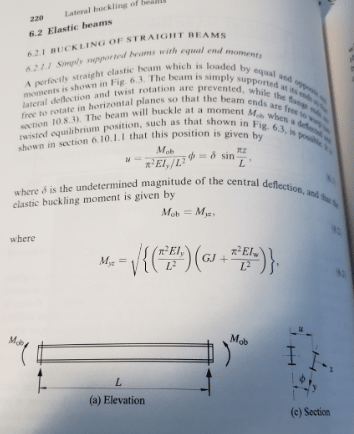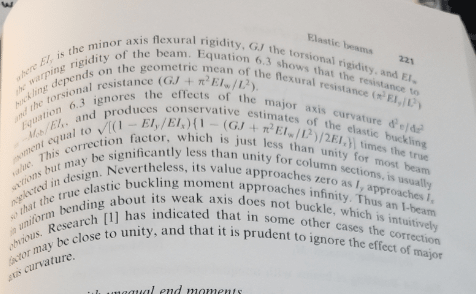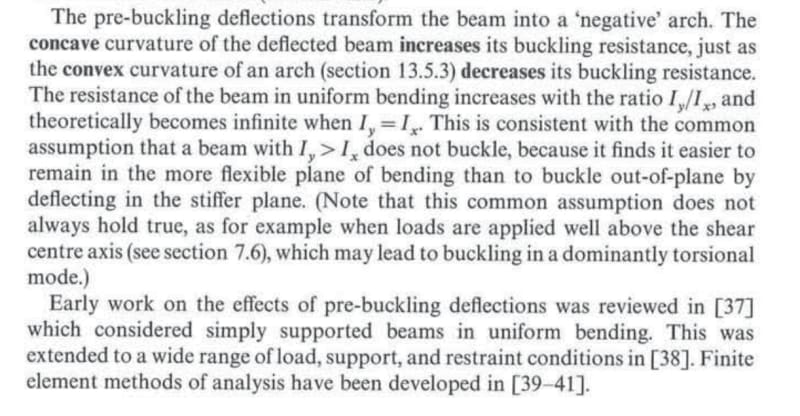Settingsun
Structural
- Aug 25, 2013
- 1,513
I found this equation in a book called "Structural Design from First Principles" by Byfield. I've never come across the (1-Iz/Iy) term in the denominator. Does anyone know another source for this? It would predict that beams don't suffer LTB when bent about minor axis as per usual understanding, but seems a fairly major point to leave out even for major axis bending if it's true.





